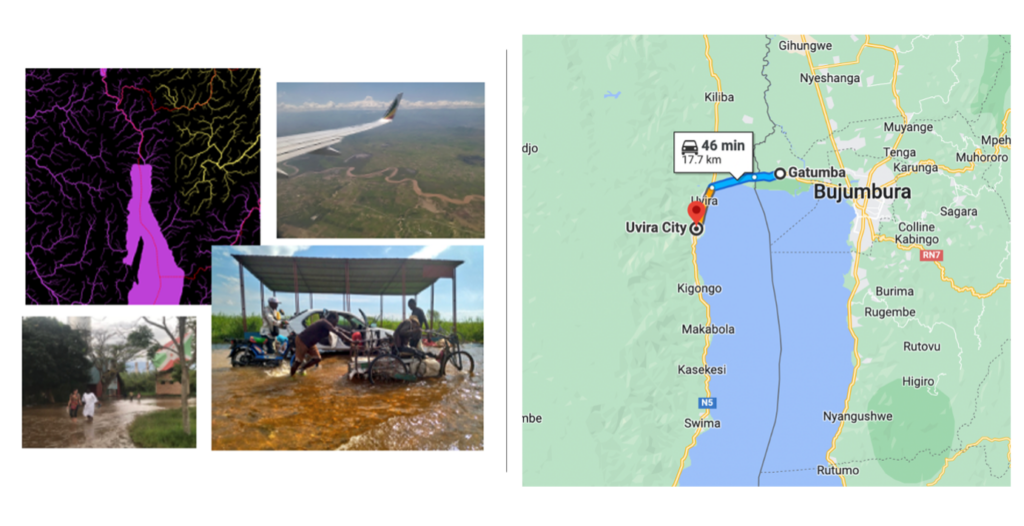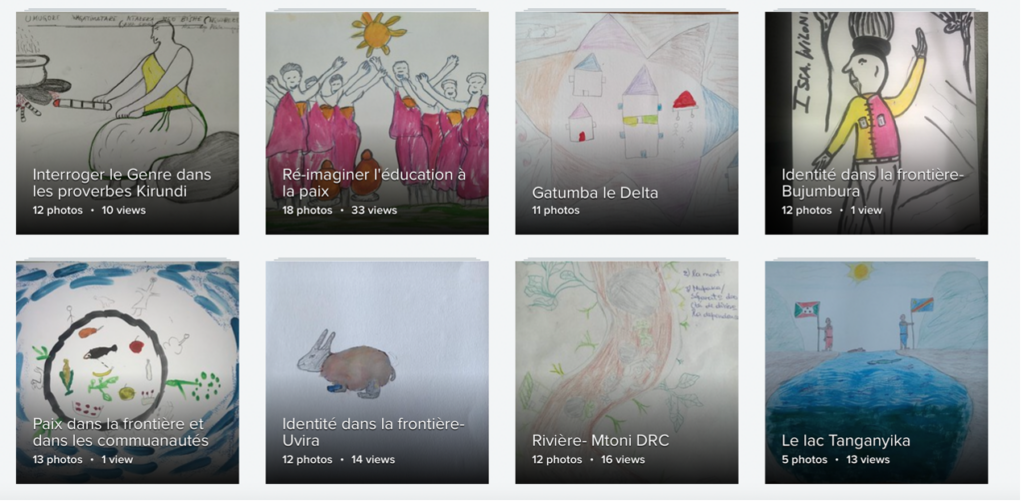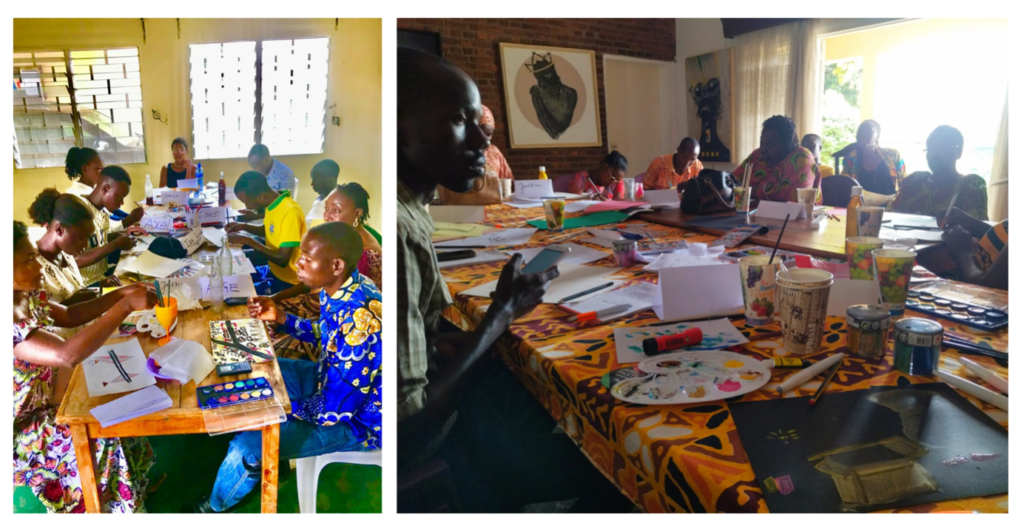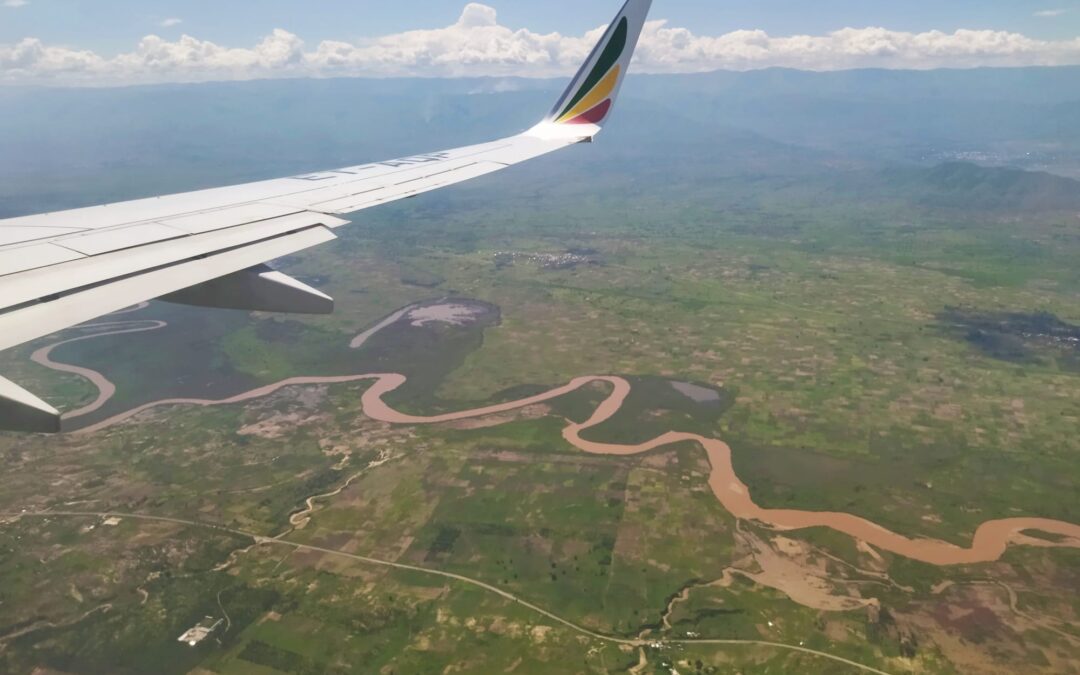This blog is part of the Fluid Borders blog series. Fluid borders is a project undertaken by a team made of academic researchers, artists, feminist activists, and people severely affected by flooding around the Tanganyika Lake and its river beds. Building upon border thinking and drawing as a research methodology, we jointly explore the literal and metaphoric fluid borders within the Burundian-Congolese borderlands and its implication for peace education from decolonial feminist perspectives. This blogs is partially building upon the blog Dessiner dans la Frontières written by Astrid Jamar, Christelle Balegamire, and Jean-Paul Nizigiyimana; and further discussions with all team members.
By Astrid Jamar
Over the past six months, we used arts-based methods to interrogate peacebuilding knowledge production, particularly these two inherent challenges, power asymmetries and knowledge extractivism. Overall, the aim is to re-imagining decolonial approaches to peace education within the Burundian Congolese borderlands.
Within this crafted joint reflexive space, we are questioning preconceived peacebuilding ideas through metaphors, namely the meaning of fluidity in terms of the identity, nation states, border crossing, raising levels of the Tanganyika Lake, severe flooding, as well as the entanglements of such fluidity with insecurity and armed conflicts within this very borderland. But what are we learning from the process? What are we left with? How do we build upon such joint reflection to move the project into the next phase, i.e. thinking through the pedagogical implications of these methodological experiments?

Images from top left to right – Map of river beds on the Burundian-Congolese borderlands, picture of Ruzizi River from an airplane, picture of team members on flooded carpark of the Ruzizi Natural Reserve Park, picture of flooded road of the Congolese Burundian Customs office, screenshot of google map showing the road between Gatumba and Uvira. Even if google indicates 45 minutes, crossing the border might take up to two-three hours depending on customs queues and due to the state of the road.
Arts Based Methods to Re-asses how we know what we know
Why shall we interrogate knowledge production? I have been taking part in critical peace and conflict debates for almost two decades. There is an increasing academic consensus that peace interventions fail due to their western-centric logics. Still, such linear interventionist approaches continue to shape how armed conflicts are institutionally responded to. I repeatably presented hard-worked critique of the coloniality of peacebuilding and transitional justice in various academic and policy settings across continents. My critique was not necessarily debunked but often dismissed on the basis that it did not provide for alternatives. As decolonial feminists extensively demonstrate alternatives – read as non-Western – ways of being, knowing, resisting to, and acting against violence do already exist. Rather than putting alternatives on the table, it seems essential to embark in a process re-assessing what we know, how we know it, what and who we take seriously in our own research encounters – and continue to shake peace and conflict debates from such joint reflection.
As the Fluid Borders team, we turned to arts-based methods to engage with the multitude of ways of “living and understanding the world,” including the multiple ways of making sense of the entanglements between bodies, nature, conflict, and peace in the Borderlands. From January to May 2023, we run 14 workshops across the Uvira-Gatumba border around the following themes: borders and the pluriverse, Gatumba as a delta, identity in the frontier, border agents, gendered stereotypes in Kirundi proverbs, etc – all drawings and texts available on Flickr.

Challenging Power Asymmetries and Extractivism through Methodological Readjustments
As we seek to challenge power asymmetries withing our core team, we organise regular reading sessions of academic texts to draw analytical insights jointly; we take turn in running the workshop sessions; leadership is divided based across four dimensions upon each experiences and interests: academic reflection, artistic production, activist activities, pedagogic implications. We all participated in sessions led by others and continuously swap from the role of animators to participants. In doing so, we seek to reduce as much as possible the divide between ‘participants’ that need to learn, from which raw data shall be extracted; ‘trainers’ that shall educate ‘participants’; or ‘local researchers’ that shall collect data to be ‘analysed’ by the ‘Northern’ researchers.
Rather than seeking to maximizing participant numbers, we reflect with three groups of ten people in Uvira and Gatumba over the whole length at the project. This includes artists, feminist activists, small-scale border women traders, and people severely affected by floodings living within such fluid borderlands. The Uvira group led by the Caucus des Femmes also includes civil society and authorities’ representatives; to articulate activist and policy implications of the project with them.

Picture from Drawing Workshops in Uvira DRC and Bujumbura, Burundi
Throughout we readjusted methodological steps. First, most of the 3-hour session was focused on drawing, thinking through, and discussing a pre-selected metaphor (i.e. feeling like a rabbit when crossing the border). We concluded the sessions by taking a few minutes to write a text that describes the drawing. We assumed we could build upon these short texts to write blogs about each workshop. We wanted to break down the mainstream separation between data collection and data analysis, as well as involve all in the writing process. However, these short texts did not capture the depth of conversations prompted by drawing on blank pages. Building upon such observation, KIOKA – the organisation taking the artistic leadership within the project – run few workshops centred around poetry and writing exercises. In addition, demanding logistic preparations implied little time was left to sit, think, read, discuss, and write. In reaction, the core researchers dedicated two months to reflect upon these interactions, integrate feminist decolonial perspectives into emerging insights, and get support from a writing coach. Emerging texts, including this one, will be translated in Kirundi and Swahili, to then be read and discussed with the 30 participants in the next round of workshops.
What are we learning – Or what do we need to keep unlearning?
Four participants joined our core team during three days workshop reflecting upon pedagogic implications of these drawing workshops. In these strategic conversations, participants illustrate some advantages and limitations of our approach:
It’s a project that’s out of the ordinary, we don’t get a module, a definition of peace, indications that are often too framed. It’s an opportunity to express feelings that often lack words, we’re used to modules, we realise that we can all make drawings, we all have the ability to get messages across
Drawing is like therapy, but what do you do with it afterwards?
We didn’t understand the philosophy of the project, what’s the implementation of the project?
Despite this shared feeling of uncertainty, all of us involved believe it was a clear win to work without any strictly framed material that participants shall be trained on. Starting sessions with blank pages opened the door to a wide variety of perspectives, and enable most participants to share their own views with confidence. Still the overall purposes of the project sometimes can get lost in the process.
We asked ourselves what are we actually learning from these sessions? Thinking through drawing and metaphors led to transparent discussions and sharp insights. But are we really deconstructing the coloniality of the peace industry? To paraphrase Gioia Kayaga, Poet-Slammer and KIOKA coordinator, are we really moving away from ‘good student syndrome’? Are we really reversing asymmetric power configurations? One concern was that structural problems are not represented in the drawings while logistic complications to organise, attend and participate in these sessions relate directly to insecurity, political sensitivity, precarity, health issues, stable access to electricity, financial rules, gasoil shortage, etc. How do we account for such unnamed structural challenges ?
Ultimately, reflections as we envision and explain details in our drawings, as we exchange about them, as we walk out of these sessions are part of the pedagogic process. We learn and unlearn from what is being said, through our team discussions about our writing strategy, commenting each other draft blogs, preparing for the next step of the project, constantly going back to the core questioning of the project: how do we know what we know?

